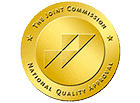With the current opioid crisis, it’s important to know all of the solutions and preventative measures that you can take to overcome an opioid use disorder. First and foremost, addiction treatment is crucial in overcoming an opioid addiction. With 175 people dying from an overdose each day, and only 10% of addicts getting addiction treatment, by being alive and finding Royal Life Centers— you are already very lucky. The solution to this problem for many is medication-assisted treatment. Read on to learn more.
America’s Overdoses
Despite being one of the wealthiest countries, the United State’s public health is in an emergency crisis. “A new study shows America has taken the lead in drug overdose deaths, with rates almost four times higher than in 17 other wealthy nations” (Reinberg). Overdose deaths in America have more than tripled in the past twenty years. The opioid crisis has severely impacted our country and its people, even showing massive effects on our life expectancy rates.
From July 2016 to September 2017, overdoses increased by 30% in the United States (Thompson). “According to the National Safety Council, more Americans are likely to die from an opioid overdose than a car crash” (Reinberg).
Prescription Opioids in Rural vs. Urban America
When looking at America as a whole, it’s not hard to see that the opioid crisis is affecting both urban areas, as well as rural areas. However, a notable increase in opioid prescriptions are found in rural America; “Patients in “the most rural counties had an 87 percent higher chance of receiving an opioid prescription compared with persons in large central metropolitan counties during the study period” (Mundell). Opioid pain relievers are often given out with too much leniency, resulting in thousands of addiction and dependency cases. The Centers for Disease Control and Prevention recently updated prescribing guidelines for health care providers that will hopefully be helpful in reducing the cases who receive prescriptions without necessity.
Why?
Many doctors and care providers had opioid medications heavily and aggressively marketed to them. Prescribing opioids didn’t only relieve chronic pain patients, but it also makes doctor’s personal effectiveness ratings soar, as less patients were reporting pain and more reported to be feeling better after receiving a prescription. Many times, prescription opioids are prescribed to those with chronic pain, or as a painkiller for the recovery from medical procedures.
Commonly, chronic pain patients, cancer patients, and patients who have undergone a medical surgery or cosmetic procedure may be prescribed opioids to ease their pain. This is not always the case however, as “…research shows that in nearly a third of cases there’s no medical reason documented for opioids prescribed in an outpatient setting” (Priedt). For nearly 30% of cases where an opioid was prescribed, “there was no record of pain or a pain-related condition” present (Priedt).
Fentanyl
“Between 2013 and 2016, overdose deaths involving fentanyl increased about 113 percent per year, researchers found… Over the past several years, heroin and cocaine mixed with fentanyl have become more common, which may account for the combination of drugs seen on death certificates” (Reinberg). Many illicit street drugs are cut using fentanyl to increase effects and make the illicit substance even more powerful. Fentanyl is commonly used to cut heroin, but also cocaine, and the synthetic opioid now has a deadly presence in pressed pills that are made and sold on the street as prescription pills like Percocet, OxyContin, Xanax, etc.
“From 2013 to 2016, overdose deaths involving fentanyl and other forms of fentanyl doubled each year…” (Reinberg). Fentanyl remains to be one of the deadliest drugs that have hit our nation. Fentanyl is being found in more and more street drugs, creating an even more lethal reaction. Drug rehab centers now have been accepting guests who choose fentanyl as their drug of choice, because of its strength and potency, and despite its danger.
Medication-Assisted Treatment (MAT)
Medication-assisted treatment is the use of addiction treatment medications, while also receiving behavioral therapy. Royal Life Centers provides both cognitive behavioral therapy, as well as dialectical behavioral therapy. There are a few FDA approved medications that are suitable for medication-assisted treatment in addiction treatment centers, and on an outpatient basis. These medications include: methadone, buprenorphine, and naltrexone. “All three drugs have been approved by the U.S. Food and Drug Administration for treating opioid addiction. Methadone and buprenorphine act as substitutes for narcotics. Naltrexone works by suppressing the desire for opioids…” (Reinberg).
At Royal Life Centers, we use buprenorphine in medication-assisted detox on a case-by-case basis, to ease the symptoms of withdrawal. We offer naltrexone medication-assisted treatment in our aftercare programs also, strictly on a case-by-case basis, as this is not the optimal course of action for all guests. We do not use methadone in any of of our treatment programs or services.
Buprenorphine
At Royal Life Centers, we have qualified medical professionals who oversee each case and course of treatment. Depending on each guest’s individual needs, goals, and circumstances, we may provide buprenorphine in our medical detox setting, as a medical taper. Buprenorphine is especially helpful in easing withdrawal symptoms and restoring functionality of the addict. Guests who receive a buprenorphine taper to counter their opioid withdrawal, tend to report higher levels of productivity and lessened levels or complete freedom from withdrawal pains. Buprenorphine also acts to curb the intense cravings that opioid addicts can experience.
“Buprenorphine can be prescribed by doctors, but only if they’ve had specialized training and received a waiver from the Drug Enforcement Administration… Fewer than 3 percent of health care providers have bothered to jump through those hoops, and those who have face regulations limiting the number of patients they can treat with buprenorphine” (Thompson).
Naltrexone
Naltrexone is a medication that greatly reduces cravings for opioids and alcohol, as well as blocks any effects of opioids on the body— this discourages and prevents relapse. Naltrexone is a medication that provides long term protection from the effects of opioids. Naltrexone can be taken orally (daily) or injected (once per month), and works to block opioid receptors so that the user is completely discouraged in relapsing. Naltrexone makes it so that if users try to use opioids, the drug will not work or make them high. Naltrexone also works to discourage alcoholics from drinking again. Naltrexone greatly reduces cravings, and is a great preventative measure for those whose cases find it necessary. We are modest in our distribution of medication-assisted treatment, and thoroughly consider each aspect of a guest’s case before building medication-assisted treatment into their treatment plan.
References:
Preidt, Robert. “’No Documented Reason’ for 1 in 3 Outpatient Opioid Rxs: Study.” Consumer HealthDay, HealthDay, 11 Sept. 2018, consumer.healthday.com/mental-health-information-25/addiction-news-6/no-documented-reason-for-1-in-3-outpatient-opioid-rxs-study-737534.html.
Mundell, E.J. “Opioid Prescriptions Almost Twice as Likely for Rural vs. Urban Americans.” Consumer HealthDay, HealthDay, 17 Jan. 2019, consumer.healthday.com/bone-and-joint-information-4/opioids-990/opioid-prescriptions-almost-twice-as-likely-for-rural-vs-urban-americans-741702.html.
Reinberg, Steven. “Among Rich Nations, U.S. Has Highest Rate of Fatal Drug ODs.” Consumer HealthDay, HealthDay, 21 Feb. 2019, consumer.healthday.com/senior-citizen-information-31/misc-death-and-dying-news-172/among-rich-nations-u-s-has-highest-rate-of-fatal-drug-ods-742953.html.
Reinberg, Steven. “Fentanyl Now the No. 1 Opioid OD Killer.” Consumer HealthDay, HealthDay, 12 Dec. 2018, consumer.healthday.com/bone-and-joint-information-4/opioids-990/fentanyl-now-the-no-1-opioid-od-killer-740508.html.
Reinberg, Steven. “Meds Can Cut Deaths From Opioid Abuse, But Too Few Get Them.” Consumer HealthDay, HealthDay, 18 June 2018, consumer.healthday.com/bone-and-joint-information-4/opioids-990/meds-can-cut-deaths-from-opioid-abuse-but-too-few-get-them-734957.html
Thompson, Dennis. “ER Visits for Opioid Overdoses Soaring: CDC.” Consumer HealthDay, HealthDay, 6 Mar. 2018, consumer.healthday.com/bone-and-joint-information-4/opioids-990/er-visits-for-opioid-overdoses-soaring-cdc-731721.html.
Thompson, Dennis. “Many With Opioid Addiction Don’t Get Meds That Can Help.” Consumer HealthDay, HealthDay, 20 Mar. 2019, consumer.healthday.com/bone-and-joint-information-4/opioids-990/many-with-opioid-addiction-don-t-get-meds-that-can-help-744037.html.
Treatments for Opioid Use Disorder, Alcohol Addiction, and Substance Use Disorders
Royal Life Centers provides a variety of treatment options, including: medical detox, a residential inpatient program, a partial hospitalization program (PHP), an intensive outpatient program (IOP), an outpatient program (OP), sober living and graduate housing. Our rehabilitation centers are experienced and knowledgeable in treating all addictions using proven effective methods and only the best practices. Royal Life Centers uses intensive therapies, including: individual therapy sessions, group therapy, behavioral therapies, support groups, adventure therapy, activity therapy, and equine therapy. The opioid epidemic is disheartening, but we are dedicated to helping people overcome it. Recovery from opioids is possible.
If you or someone you know is struggling with an opioid addiction, or other substance use disorder, please reach out to our addiction specialists for guidance at (877)-RECOVERY or (877)-732-6837. Our team is available to take your call 24 hours a day, 7 days a week. Because We Care.




